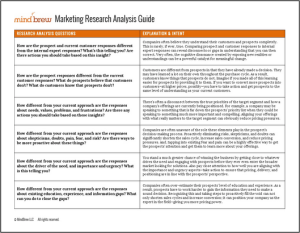Have you ever witnessed a car wreck just before it happens? Where the two vehicles haven’t yet collided, but their paths make it obvious to you that a crash is inevitable?
Well, there are two forces in your business right now that are clearly headed for an extremely costly collision…
On the one hand, most salespeople are being pushed to hit higher and higher quotas. In fact, 76% of the B2B sales operations in a SellingBrew study reported that their quotas were increasing. In that same study, only 24% of the respondents indicated that they were very confident in their ability to actually achieve those higher quotas.
And keep in mind that these higher quotas are usually based on top-line revenue only.
On the other hand, the buyers sitting across from your salespeople are also being pushed to hit ever-increasing “savings” goals. That’s right…procurement people have quotas, too. It’s just that their quotas are around the value of the price concessions they’re able to secure.
And here, it’s important to recognize that companies have been investing heavily in their procurement functions—more tools, more training, and so on.
So…on one trajectory, we have salespeople who are nervous…and quite possibly desperate…about hitting higher, top-line revenue targets. On another trajectory, we have buyers who are growing more and more capable of negotiating bottom-line discounts and hitting their targets on price concessions.
When these paths intersect, it’s pretty easy to see how your margins and profits are likely to be crushed in the ensuing pileup.
The outcome is predictable. But it’s not inevitable and there are a number of things that sales operations can do to get ahead of the issues and protect the company’s margins and profitability moving forward.
For example, you can teach your salespeople to recognize the tricks and tactics that purchasing people will use against them. After all, once they know they know how the magic tricks work, those tricks tend to lose all of their power.
Or, you can get your salespeople some negotiation training. The shocking truth of the matter is that even though they’re doing deals every day, most salespeople have never received any sort of training in negotiation whatsoever. And they’re negotiating with people who’ve likely had weeks and weeks of training!
The point is that unlike witnessing a car crash, where you just have to wince or turn away as it all plays out, you can do actually something about this. And, there are straightforward steps you can take to avoid this costly collision.
But you first have to recognize the issue…and resist the temptation to just turn away.












